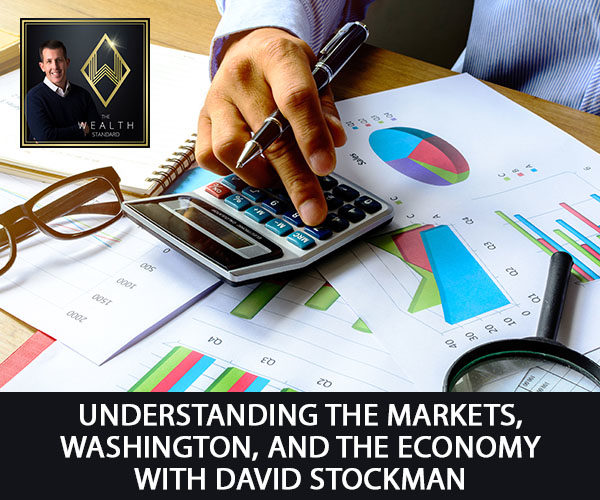Understanding The Markets, Washington, And The Economy with David Stockman
Podcast: Play in new window | Download
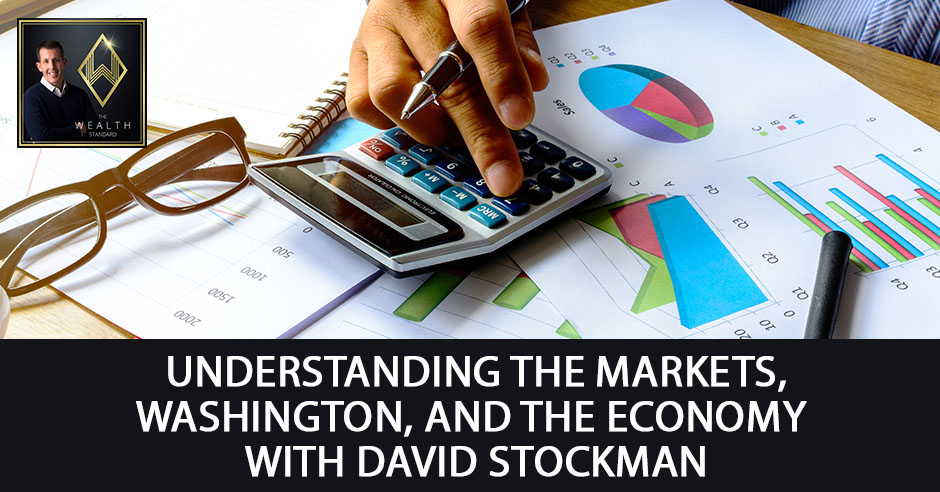
David Stockman is an American politician and former businessmen who served as a Republican US representative from the State of Michigan from 1977 to 1981. He is the ultimate Washington insider-turned-iconoclast. David reveals some of the secrets that politicians tend to hide while sharing the milestones in his life that brought him to understanding markets, the economy, fiscal policy, and monetary policy. He takes us back to the events that changed the economy in history to that of the financial crisis in 2008, sharing what he understood about Wall Street and how things came to be from then on. Tying it up to the issue at the heart of capitalism and the prosperity it creates, he talks about the markets and creative destruction.
—
Watch the episode here:
Listen to the podcast here:
Understanding The Markets, Washington, And The Economy with David Stockman
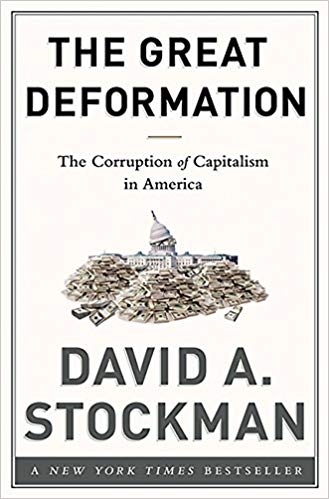
The Great Deformation: The Corruption of Capitalism in America
I have the pleasure and the honor to have David Stockman on with me. David, welcome.
I’m happy to be with you.
For those of you who don’t know David Stockman, he is an American politician and former businessman who served as a Republican US representative from the State of Michigan from 1977 to 1981. He also served as the director of the Office of Management and Budget under President Reagan. David is the ultimate Washington insider turned iconoclast. He began his career in Washington as a young man and quickly rose through the ranks of the Republican Party to become director of the office that under President Reagan. After leaving the White House, he had a career on Wall Street. You’ve had quite the experience, David. You also authored an incredible work, which I would say a treatise of what your principles really are called The Great Deformation: The Corruption of Capitalism in America. You also have a book that you just released, Peak Trump: The Undrainable Swamp and the Fantasy of MAGA.
David, thank you for your work over the years. I’ve followed you for a long time. The empath in me cringes sometimes and I see you on TV trying to advocate principles of liberty, principles of free market and certain monetary policy principles, fiscal policy principles. It doesn’t seem to get through. Honestly, it says a lot about who you are that you continue to advocate for principles you believe in despite the resistance you get most often. Give the audience an idea of what are the milestones of your life that brought you to the point where you understood what you do about markets, the economy, fiscal policy and monetary policy.
You summarized my career at length. Half of the time I was a politician and half of the time, I was an investment banker on Wall Street, so I never had an honest job in my whole life. I learned something big during that two-phase career and that is about debt. Washington loves debt because you can keep the can down the road and put the cost on future generations and pretend that the interest carry is not all that bad and you can get away with. There are no offsetting institutions and principles that mitigate against that. You’re going to end up with a $22 trillion national debt that we have. As I show in my new book, Peak Trump, we’re heading for $40 trillion before the end of this coming decade and that will be just a devastating burden on the economy. As near as I can project, it would amount to about 140% of GDP. We only know of three economies that have more government debt than that are Japan, Greece and Italy. It doesn’t bode well for where we’re heading, especially because we have this oddity in our demographics here in America and that is the Baby Boomer. It was a giant aberration in terms of the number of babies that were born in 1946 when I was born.
In 1962, there are 80 million people. If you do a little math, you’ll realize that all of them will be retiring in the 2020s. In the early 2030s, they’ll be hitting the Social Security trust funds and Medicare and a lot of the other so-called welfare state supports massively just in terms of numbers. What politicians don’t let you know or maybe don’t even know and don’t acknowledge is that it’s a built-in Ponzi scheme, Social Security and the rest of the welfare state. They build in higher and higher real benefits over time relative to what people earn during their working career and put into the trust fund. It’s nothing like insurance, it’s nothing like actuarial balance. It’s a Ponzi. If you have this debt already baked into the cake and you have the demographics baked into the cake and then you have this escalation of real cost per beneficiary, you’re in big trouble. That’s what the politicians have ignored. Wall Street used to know a lot better. Back in the ‘50s, ‘60s and the ‘70s, you had a decent level of prosperity. Wall Street understood a little bit about what sound money was in what fiscal rectitude was.
If you got heading off the deep end, it happened in 1967 or 1968. It was Johnson’s, Guns and Butter. It’s the Great Society on the Mekong River. It was a disaster, but finally, Wall Street rose up and said, “You can’t do this.” They forced Johnson to raise statutes to balance, which is out of control. William McChesney Martin who was the chairman of the Fed at the time believes, “You can’t print your way to prosperity.” We were on the grades and we had a recession and people learned their lessons. I say all this because after 1971, when Nixon took us off of the gold standard, it was mainly nothing to do with the magic of gold. It had to do with discipline on the central banks and the financial system. It’s accountability and discipline. You couldn’t create credit and money at will in any quantity. That went away and it took a little while for people to realize that we were on a total fear system and nothing could stop the central bank if they want to print like crazy.
Wall Street learning to love money burning because, in the short run, it helps to inflate financial assets. It made interest rates lower. It made capital rates and our P/E multiple times and everybody lived happily ever after except Main Street. Here is the point where the rubber meets the road. Since Greenspan took over the Fed in 1987, we had been off in something I called bubble financer Keynesian central banking. In which we’ve had tremendous booming prosperity on Wall Street and increasing stagnation and flat-lining failure on the Main Street. Let me give one statistic on that and then we can move on because it summarizes what I learned through my years in Washington and in the second half of my career in Washington. If you go back to the days right before the great crisis that shook the rafters in September 2008, everybody thought the world was coming to an end. If you look at where Main Street was as measured by industrial production and that’s everything. That’s manufacturing, that’s energy, coal mining, oil shale and all the utilities, gas, electric, water. It’s a fundamental measure of output on the Main Street economy.
You couldn't just create credit and money at will in any quantity. Share on XThe reason I dwell on it is that if you go to the level that existed in November 2007 and compare it to where it is now, we gained 3% in the last eleven years. That’s the same thing. If you divide that out by eleven years, you might as well fall flat. Look at where the NASDAQ-100 was on November of 2007. NASDAQ-100 is the leading edge of the casinos or the stock market. You take the inflation out of it. We’re talking apples to apples here because of the industrial production is physical and it has inflation in it. On an inflation-adjusted basis, the NASDAQ-100 last fall peak up to 200% and Main Street production output is at 3%. That doesn’t make any sense because often the price of equities and other financial assets reflect the output and income capacity and growth of Main Streets. What we have is a totally bifurcated economy on unbelievable prosperity down on Wall Street and that’s a great bubble that’s gearing the labs.
Trump made a mistake of embracing it. The stagnation and increasing resistance to growth on around Main Street because we have so much debt. We can get into that but the amount of debt, not just on the government sector that I talked about, but also in the business and financial institutions, add up in total to $70 trillion, which is three and a half times net income. I don’t think that stable is sustainable, but it does mean that you’re lugging so much debt that growth becomes harder and harder. That’s also why we woke on a ten-year rolling basis. Our real GDP growth rate now is 1.5% compared to 3% to 4% back in the heyday before 1971 when Nixon took us down the path we’re on. That’s some big-picture views that I put together and assess over my years in Washington and then on Wall Street.
The first thought that comes to mind is I think it did work relatively speaking for bankers over the last years. At the same time, if you look at the fundamental side of things. I don’t think most people understand the fundamentals. If you will dig to look at what occurred 2008, it started with Greenspan and what he started to do, especially with the dot-com bust. It comes down to the artificial influence of markets because markets are supposed to be a clearinghouse. If you look at profit and you look at capital and you look at valuations, you buy companies that are profitable, that have good cashflow and that have good fundamentals. You don’t buy those data. They’d have poor operations and poor balance sheets and poor financial statements.
If you look at what has been done is the injection of capital into society. It has artificially increased the demand and the flow of capital into businesses. That’s why a lot of the bond issuing by corporations to buy back their stock is just one example of that manipulation. It’s not understood from the average American’s perspective because they don’t have this background in economics, unfortunately. A lot of the stuff that’s happened has been, not necessarily behind the scenes. What’s occurred into the narrative around it that you explained is that this is a good thing. That we’re here to save the economy, we’re here to bail out banks and we’re here to do this and this for your benefit, but ultimately it was just to the benefit of them.
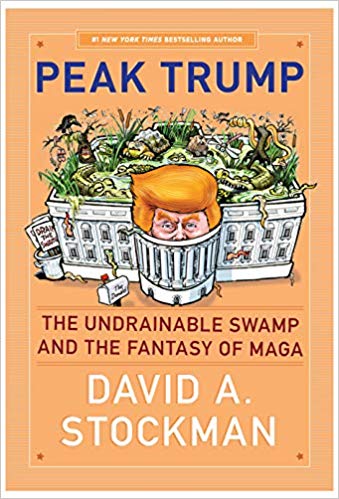
Peak Trump: The Undrainable Swamp And The Fantasy Of MAGA
This is where I want to get into the idea of capitalism and economics. I interviewed a guy who wrote a book called The Coddling of the American Mind. The book is about the higher education system and how free speech has gone from one side of the spectrum where the epitome of free speech and now it’s the complete opposite. The Coddling of the American Mind is trying to protect those from emotional harm than anything else. What it does is it robs people of the experience of figuring things out on their own. The point of capitalism and economics fundamentally is to have a system in where things are innovated and solutions come up. People are able to express themselves through capital and through resources, but if they fail, they’re out of business or they learn. That’s ultimately been completely removed from the equation in most cases and has created what we have now.
In terms of the things I look at, I don’t pay that much attention to the way that they’re paddling all the snowflakes on college campuses but I totally understand that. At another level, at the level of the macroeconomy and Washington policy and Wall Street, it’s the same thing. Wall Street wants to be cargo. We saw the Christmas Eve and they had a hissy fit because they finally said, “After eight years of negative real interest rates, the money market rate, the Fed funds rate is less than inflation for eight years running.” They finally said, “We’re going to normalize interest rates. This big bloated balance sheet we have that inflated with stock and bond market is going to continue on automatic pilot.” That’s what follows it. They have a hissy fit and the next thing you know, it does a U-turn. The Fed-heads are out there singing about, “We can be patient. We can defer delay.” I said, “What are they thinking about? They have been deferring for ten years.” We’ve had unreal Central Bank policy. Go grab this balance sheet level and it’s manipulation of interest rates in the yield curve. Yet, we get just a modest correction or wakeup call a couple of weeks before Christmas Eve. At the big sell-off on Christmas Eve, all of a sudden, all the crybabies on Wall Street are asking for their safe room.
If you go back to 1970 or even the mid ‘80s, when I left Washington, the Reagan administration when I was budget director and I joined Salomon Brothers, which was a rough and tough place then. It was run by John Gutfreund. He was called the king of debt. It was a huge trading house with all debt securities. You didn’t see this snowflake attitude on Wall Street. People expected that there were going to be cycles. That they were at risk if they’re going to chase the latest and greatest stock bubble phenomena. There was no presumption that if there’s a big meltdown, Wall Street would be bailed out or that we would get to a situation like 2008 when Morgan Stanley was insolvent. It should have been forced into Chapter Eleven. Merrill Lynch was insolvent, it was put into a shotgun marriage. The Bank of America didn’t want to buy Merrill Lynch, but they were forced but it and Merrill Lynch should have gone bankrupt. Frankly, Goldman Sachs could have gone bankrupt as well. All of them were way over their skis with all kinds of sticky, risky, long-term assets that they were funding with overnight money. The panic came in, the overnight money dried up. They faced over putting crisis they couldn’t get out of and the market should have been allowed to work.
What I said in my previous book, which I think still is a lesson that’s been lost because we’ve had this phony stock recovery. The recency bias obscures everything that we allegedly learned back then. What I showed is, there was no danger of a meltdown in the banking system on Main Street. There were no lines with the banks other than a few high that were in the subprime mortgage business that should have gone out of business anyway. The key point is the bailouts were of the big Wall Street gambling houses. It wasn’t of the banking system. We should have allowed the crisis to burn out in the canyons of Wall Street. All those firms who will be gone on there, they would have been reorganized. The same people that were running them, then we’ll be running the reorganized Wall Street now. All of their phony wealth had been built up and now consist of some realistic appreciation about the danger of too much debt and risk and too much gambling down in the canyons of Wall Street, but none of that happened. If we did the snowflake thing, Wall Street will go to all these banks, the same way with the car companies and a lot else in the US economy. As they say, it was a wasted crisis.
We did nothing but double and triple down on what Greenspan had already been doing, which was bad enough. Now the Central Banks led by the Fed have painted themselves into a corner. Let me just give one little illustration of how aberrant all this is. If you listen to what I call bubble vision and let’s say CNBC are both the same, you would think that everything is normal and stable and will forevermore be when in fact, we’re in a giant crazy experiment. Anybody who looks at it objectively with historic notions of sound finance and financial discipline will say, “What are they doing?” On the eve of the Lehman bankruptcy, September 15, 2008, the balance sheet in the Fed was $138 billion. It had taken 94 years from when the Fed opens its doors in 1914 to build that balance sheet off into Ohio State and test and business cycles and so forth. It had taken 94 years to build that up. Even then, it wasn’t perfect and you were creating separate bank credit out of thin air. In the next 94 days after Lehman went under, Bernanke and his merry money creditors at the Fed created 145% more balance sheets in 94 days that all their predecessors had gone into previous 94 years. They took the balance sheet and earned $30 billion to $2.2 trillion in 94 days.
After they had supposedly rescued the economy when the only thing they did was suspend the laws and supply and demand and financial discipline. After they’d done that, they kept on going and they invented Q2 and Q3 and the twist and other central bankers baloney. They eventually took the balance sheet to $4.5 trillion. That means that in roughly nine to ten years, they create $3.5 trillion of Central Bank credit out of thin air and pumped into Wall Street. That caused the price of bonds to soar because of all of this artificial demand from the debt. They paid for it with something for nothing digital credits made out of thin air. When the bond markets soared and long-term interest rates went lower and lower beyond the 1.35% here and even lower abroad, that’s the capitalization rate for all financial assets. When the long-term interest rate gets pushed down before the board, the P/E rate or the price-to-earnings ratio is the inverse of its source for equities. The stock market waves off and then you get all kinds of financial derivatives, options and futures and the whole rest of the complex going for a huge ride.
The point of capitalism and economics fundamentally is to have a system where innovated solutions come up. Share on XThey didn’t fix anything. They violated even more laws than anybody had done before and get on the financial laws. They created with the third-grade bubble of this century that we’re in right now. I want to relate this because I don’t think it’s sustainable. I think we’re going to have an even bigger and more thundering crash for some reasons that we can get into. The reason I call my book Peak Trump is that Trump, for all his defects and lack of preparation and know-how to do the job that he was running for, at least he called it one big crowd ugly bubble during the campaign. When he was elected, the S&P 500 was 21.40. Fast forward to two years, the peak was 29.40. The problem is that big fat ugly bubble now became the trance of Trump and economics. It was a huge mistake to embrace that bubble in the economy that went with it because they’re both going to go down for the count. They’re going to splatter over the White House and Donald and all the rest of it and we’re going to be in for big-time crisis in the years ahead.
What keeps circling through my mind is it’s like a violation of the principles of humanity or behavior. We’re here having an experience of life and we learn by going through difficult things and learning how to make decisions and being responsible and being self-reliant. That cycle happens throughout our entire life. Going to the example I was using, it’s evident that the higher education model, the coddling of a mind, ruins and destroys the mind. It’s not allowed to have the experiences that form their perspective, their intuition, their opinions and figuring things out using a rational brain. It’s the same thing monetarily where you had these companies and you also had influences that failed, yet you didn’t allow them to fail and it magnified the problem.
It’s not even making the problem worse. It’s worst times two because now they didn’t learn and they’re going to just keep using the exact same behavior that they used before. Now, it’s a much bigger problem and it affects the whole world. It’s not the US. This has gone through the entire world. What happened is it’s on the backs of the American people. The citizens meet Main Street as they are called, but the unfortunate thing is that the majority of people don’t know what economic policy is and monetary policy. They’re just following what the status quo has been for the last 30 or 40 years. The unfortunate thing is that we’re past the point of no return as far as having to learn a lesson the hard way. That’s part of making mistakes. It’s a little difficult in the transition and it’s unavoidable. I agree with you. It’s a matter of time. That’s just one of those things where it just keeps sputtering along and people were like, “If I believed you or if I stuck to the fundamentals and principles ten years ago, then I wouldn’t have made any money.” What the view is right now and one of the things where in hindsight, the lesson is always learned. It’s never learned in foresight.
This gets to the issue of the heart of capitalism and the prosperity that it creates, is the money and capital markets. That’s where the financial flows crisscross. That’s where capital is raised. That’s where savings are put to work. You need very honest, efficient and discipline money in capital markets. If you have those, it will spread out to the rest of the GDP and the Main Street economy. The great trade market economist Joseph Schumpeter has this concept of creative disruption and that’s all capitalism progresses. Buggy whips go by the wayside and you get a horn on your automobile, your Ford, your model-T or whatever it is. That is important, but creative disruption is not working efficiently and productively if the financial markets are falsified by central bank manipulation and intervention. When they’re falsified and you get stock prices that are way too high, people are rewarded for doing the wrong thing where they should be doing something else.
I use this as a way of working up to Amazon. Amazon is turning the retail world upside down. It’s an amazing machine. In some ways, created a destruction like there’s never been before, but the stock market is so out of control because of the central bank manipulation that Amazon is drastically overvalued. It doesn’t produce any profit. The profits that you make are nothing to do with that big eCommerce business, the profits that may come out with the cloud business and that’s a tiny piece of it. The people running Amazon from Jeff Bezos are being told, “Don’t worry about pricing for profits, simply price for expansion, a price for sales growth or price in order to destroy the next industry that you decided to penetrate.”

The Markets: An artificial influence is always going to create unintended consequences.
It trades off and on at 150 or 200 times income. It trades multiples of cashflows that never made any sense of history. As a result of that, we’re not getting just creative destruction, we’re getting just pure destruction where it’s all these empty malls and all these failing retail chains. All these people whose livelihood was invested in the bricks and mortar retail sector are being prematurely thrown overboard or impaired and injured. Amazon is going too fast because Amazon is way overvalued. These are maybe worth the peak, but if the company were valued rationally and a preset template or preset type of machine, it might’ve been worth $5 billion.
At $5 billion, he would have one kind of business model and growth strategy, a modus operandi for Amazon and $150 billion is one that is something totally different. All the people who work for it will have some piece of the action in the stock options and so forth. If you take that example and you multiply it over and over by hundreds and thousands of times and we’re getting all kinds of bad signals to all our economies. People are making bad decisions and at the end of the day, they’re going to meet less growth, less prosperity, lower living standards and more trouble down the road. The worst case is the signal for Washington. If you tell the politicians and I was one of them for more fifteen years so I understand the mindset. If you tell him that you can borrow almost unlimited money at less than 2% interest, they’re going to borrow as if there’s no tomorrow. They’re going to say, “Debt spend is bad things. How many will get to the deficit in the volume buy?”
We’ve been kicking the can for 25 years and it’s because they have been totally mis-signaled and misled. The reason I know that’s true is that I was there. When I became the budget director in January 1981, the tenure bond rate is 16%. The 30-day trade rebill 20%. Our mortgages were up in the high tens and the bank rates are up for pushing 20%. In that environment, the deficits and debt scared the hell out of politicians because at least they could do the math. If you borrow $1 trillion and you’ve got a 15% bond yield, that’s $150 billion a year of interest you’re going to have to pay. It’s going to squeeze out your favorite book or project for education or some do-gooder thing that all the politicians glom onto. Some favorite war has happened to the warmongers so they’re either domestic do-gooders or foreign warmongers, but they want money and they don’t want to have to spend it on interest so they get reasonably disciplined or prudent fiscally if there are real interest rates.
We can call it price discovery and we can call it honest pricing, but the systematic effect are in central banking. I used the word because it means they’re trying to run the economy on the theory that capitalism was a total failure on its own. We’re constantly stumbling far in the recessions, depressions and all kinds of organizations, which is total baloney but that’s the view. Therefore, they’re in the middle of what I would call the central nervous system of capitalism. It’s Wall Street. It’s the financial markets and they should get out of there. They should let interest rates find their own level. Let supply and demand clear the market. If the stock market gets all enthusiastic, let there be a couple of crashes and let a few people be carried out on their shield. By the way, we have the greatest prosperity known to man. In 1870 to 1914, real GDP growth of 4% per year on average for 44 years. There’s nothing like it since and we had no central bank. We had nobody saying what the interest rate should be and we had nobody targeting GDP or the equation rate or anything else. We had just capitalism well.
It all comes back to that principle of accountability. When you have signals or you have influences, it’s an artificial signal. It’s an artificial influence and that always is going to create unintended consequences and they’re everywhere. You mentioned some empty malls and so forth. I’m not going to argue that Bezos or some of these tech guys have created value because they have, but at the same time, what value has been destroyed somewhere else? If I look at my local economy here where I’ve had a hard time trying to hire people over the last two years because there are hundreds of tech companies here now and they are not profitable. They price everything with tremendous amounts of VC funding or private equity funding and I can’t afford the developers. I can’t afford the project managers. It’s insane how much wages have been pushed up.
We're here having an experience of life and we learn by going through difficult things and learning how to make decisions. Share on XThat’s one of those things where it seems good on some measurements because of what artificial demand is doing. At the same time, you’re not looking at the unintended consequences. I don’t think a lot of those consequences have manifested. On paper they have whether it’s a default of automobile loans, whether it’s the student loan bubble. They’re yet to manifest, but those are going to be some of those signals like, “Maybe it was good over here, but look at all the crap and chaos it caused over here.” That’s where I would say that difficult time is ahead of us. We all have it in our prayers that hopefully at this point, they understand the fundamentals of it and make the right decisions. You can’t just keep deferring the fundamental issue. The fundamental issue is you use debt to manipulate behavior, manipulate prices and manipulate growth and it wasn’t true growth. That’s what hopefully people will get, but time will tell.
You’re getting right to the heart of the trouble with bubble finance. There’s a lot of hidden rot in the financial and operating economy as the bubble gets larger and larger. People don’t see it either because it’s a new phenomenon or because there’s a suspension of disbelief. There’s been such a huge boom in the total value of the equity market and the bond market together that it’s generated enormous amounts of investible venture capital. Now, venture capital is flowing in tens of billions of investible funds. They’re looking for every top of maybe startup they can find and they’re all being funded. These are what I call burn babies. They are not paying the rent and the lights and the payroll out of revenue, they’re paying it out of venture capital. We’ve seen it before but this time it’s going to be the worst ever.
When the market goes into a big correction and the venture capital world dries up and freezes up and there are no third, fourth, fifth rounds or new fundings, all of a sudden, all of these burn babies out there are going to run out of cash. They’re going to turn off the lights, nail the door shut, get out of dodge and it’s going to cause a huge negative sucking sound. Voices like Brooklyn or Silicon Valley or Austin, Texas or a lot of others. For instance, take my favorite, WeWork. If there was ever a poster boy for the insanity of the current bubbles, it’s WeWork. They raised billions of dollars in the junk bond market and elsewhere to buy fixed office building assets that have a long life of 40 years or to lease them on long-term leases and to improve them will all kinds of fancy gigs. They attract people to come in and they’ve got all kinds of flavored coffee and all the rest of it there. On the other side, their tenants are on one week, 30-day or three-month leases. That is the most mismatch book in human history and it would never see the light of day if you have financial discipline. When the money is flowing in unlimited ways, the risk is totally ignored. You create a ridiculous oddity aberration like we were.
I’ve been to WeWork and they’re cool. They have a cool office space. It’s open. It’s a cool concept. I’m not saying that they’re not creating value, but at what price and what’s the consequence of how they’ve done it. That’s the point you’re trying to make. There are good sides to it, but nobody ever focuses on the bad and what the consequences are. It’s super convenient to order stuff from Amazon instead of having to go to the store. At the same time, it’s like, “What is that done the way in which they’ve been able to fund that and do that?” The consequence of being able to do it in the way they’ve done it hasn’t necessarily been manifested yet. That’s going to be worse than having the benefit of what they offer as a product.
I’m not pointing that WeWork is a bad idea. It’s a great idea but it can mismatch your work. You can’t be writing twenty-year leases on one side and day-tenancies on the other side. If you want to do it that way, then you’ve got to charge your tenants in the arm and the leg so you build up reserves. When the next downturn pumps, half the people occupying desks in WeWork are going to be gone. They’re going to be ionized because they’re burned babies. They have no revenue, they have no profit and they have no reason for being that only if they could raise capital because at the moment, anything goes. Now, you get a half-empty office building on twenty-year leases and all your tenants are disappearing or bankrupt. You’ve got a mess.
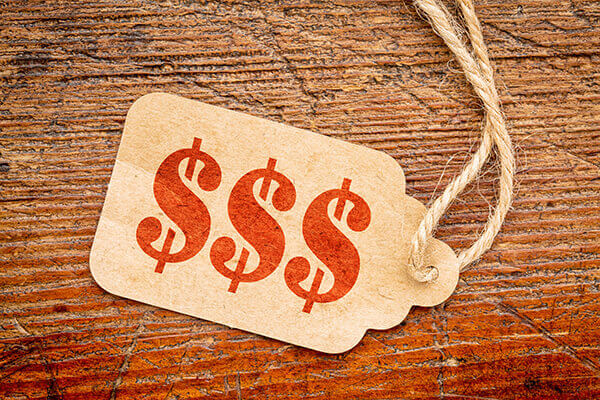
The Markets: The ignorance of individuals has been preyed on. Ultimately, we’re the ones who are going to have to pay a big share of the price.
I have one final question for you. If you had 60 minutes inside of a room of your choosing with Alan Greenspan, Ben Bernanke, Janet Yellen and Powell, what would be some of those first questions you would ask them or statements you would make to them?
For me it wouldn’t last very long because I would say, “You’re dead wrong and you’re not needed.” The idea of activist central banking and setting every price on the meal curve from overnight to 30 years, which directly or indirectly they attempt to influence. This idea of a Central Bank board is counterproductive. It’s negative and it’s not needed. We should go back to the banker’s bank that was created in 1940. You’ll see a legal Fed to buy any government debt, not bonds or anything. It did not have any mandate of full employment or 2% inflation. It was simply meant to be a backup source of liquidity to regional banks. Liquidity was to be provided to commercial banks only if they presented sound collateral based on receivables or finished inventory that could be converted to cash. What you need are central bankers where they would pair green eyeshades that could work through balance sheets and financial statements and determine whether or not the collaterals that are being brought to the window is sound and mostly loanable. We didn’t need Alan Greenspan and we didn’t need Ben Bernanke and his PhD and all these ridiculous models that they used. We didn’t need any of that. We need good accountants and lending officer. I would say, “We don’t need you but thanks for your service.”
It’s one of those things where they have this iconic status it seems. I look at the core and root of the problem and the unfortunate thing is the awareness that people have regarding monetary policy and the role of a Central Bank is nonexistent. It’s going to take some hard times for people to wake up. That’s behavior in general. When you start to experience pain, you’re like, “I don’t like that. I should change what I’m doing to get the pain.” That’s when change happens. As a society, it’s unfortunate that the narrative that we’ve been fed for the last 30 years is that all of this is good for us. That’s the saddest part. The ignorance of individuals has been preyed on. Ultimately, we’re the ones that are going to have to pay a big share of the price, but time will tell.
It’s bad and it’s also good because they put their credibility on the line. They said they fixed everything. We know what we’re doing. We need a monetary policy and geniuses on the Federal Open Market Committee and we’ll make everything better. When this bubble collapses, they will not be able to rescue the market. People are going to lose trillions of dollars. They’re going to be mad and angry. Some people are going to be totally financially ruined and there is going to be a day of reckoning then maybe the way will be open. We understand this to tell the American public. We don’t need this massive central bank intervention. It’s got to be house clean with echoes building and a totally curtail back to its original mission. There’s a chance that it could happen, but it will be painful getting from here to there.
David, thank you so much for your time. This has been a fascinating dialogue. I appreciate you teaching me and teaching the audience. What’s the best way we could support you? What’s the best way to follow you and see what you’re up to?
The lesson is always learned in hindsight; it's never learned in foresight. Share on XIf you’re interested, I have a daily blog. You can Google it and sign up. It’s a modern subscription-based service or you can read my books. My newest is Peak Trump: The Undrainable Swamp and the Fantasy of MAGA. It’s important to understand what’s going on right now because we’ve all been totally misled by all the boasting and bragging coming from the White House about the Trumpian economy. It’s a house of cards and a house of debt.
Thank you for what you’re doing. Thank you for your service. We’ll talk to you next time. Thank you, David.
Important Links:
- David Stockman
- The Great Deformation: The Corruption of Capitalism in America
- Peak Trump: The Undrainable Swamp and the Fantasy of MAGA
- David Stockman’s Contra Corner
- The Coddling of the American Mind
- WeWork
- David Stockman’s blog
- https://Twitter.com/DA_Stockman
- http://DavidStockmansContraCorner.com/
- https://www.Amazon.com/Peak-Trump-Undrainable-Swamp-Fantasy/dp/0578451107
About David Stockman
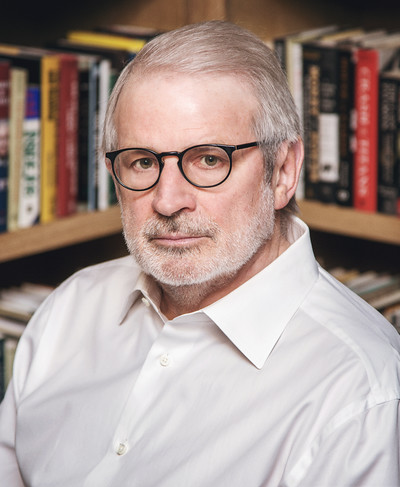
David Stockman is the ultimate Washington insider turned iconoclast. He began his career in Washington as a young man and quickly rose through the ranks of the Republican Party to become the Director of the Office of Management and Budget under President Ronald Reagan. After leaving the White House, Stockman had a 20-year career on Wall Street. He is the author of The Triumph of Politics (1986), New York Times best-seller The Great Deformation (2013), TRUMPED!: A Nation on the Brink and How to Bring it Back (2016), and most recently, PEAK TRUMP: The Undrainable Swamp and the Fantasy of MAGA (2019). He is the editor of David Stockman’s Contra Corner: http://davidstockmanscontracorner.com.

